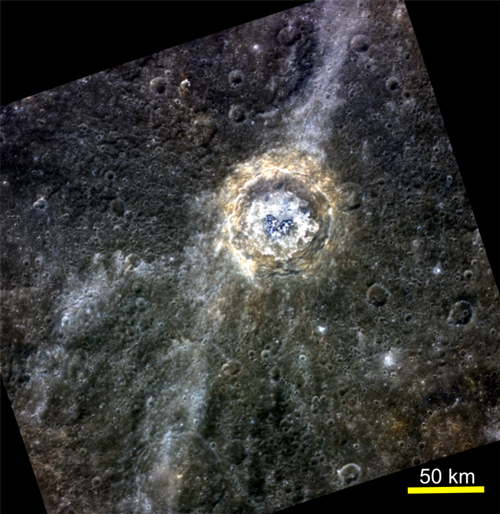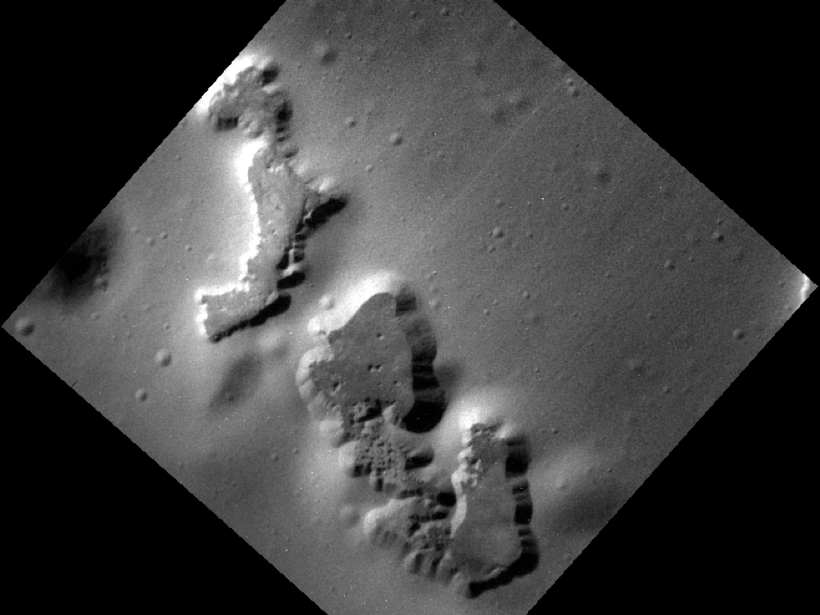Source: Journal of Geophysical Research: Planets
One of the key results of the Mercury Surface, Space Environment, Geochemistry, and Ranging (MESSENGER) mission was the discovery of thousands of “hollows”—shallow, fresh-looking depressions up to a few kilometers wide—scattered across the planet’s surface. Although several lines of evidence indicate these features form as a result of the loss of volatile materials present in surface rocks and exposed by impacts, the specific process driving this loss is not yet known.
Now, using new morphological observations from unprecedented high-resolution MESSENGER images, Blewett et al. have proposed a new model for the formation and growth of hollows. The team used measurements of shadow lengths to calculate the depth of more than 2500 hollows and found that the depressions’ average depth was just 24 meters—substantially less than the typical thickness of the layer of dark volatile-rich material in which the features are most often found.

This material, known as “low-reflectance material” (LRM), is generally kilometers thick—much thicker than the depth of the hollows. Thus, the researchers’ finding of consistently shallow hollow depths across the planet suggests that the hollows’ shapes are not controlled by the thickness of the host LRM. In other words, the hollows don’t burn all the way down through the volatile-bearing dark material and stop once they reach the bottom of this layer.
Rather, the authors argue, a volatile-depleted “lag” deposit, which protects the underlying material once it becomes sufficiently thick, may inhibit deep hollows from forming. The frequent occurrence of hollows on the walls and central peaks of impact craters, locations too steep for lag to develop, is consistent with this proposed view.
The researchers conclude that the hollows’ formation and growth may be due to the volatilization of carbon. Recent evidence indicates that carbon in the form of graphite is an important constituent of Mercury’s crust. The loss of carbon, they suggest, could occur via either the process of ion “sputtering” or the conversion of graphite to methane via proton bombardment. This carbon loss may create the hollows.
In addition, because of the presence of hollows within several impact craters with ray systems, the team was able to estimate a lower limit for their rate of horizontal growth, which likely occurs via the retreat of scarps that form the hollows’ walls. This retreat occurs at a rate of 1 centimeter per 10,000 years, which places an additional constraint on the formation and history of Mercury’s mysterious landforms. (Journal of Geophysical Research: Planets, doi:10.1002/2016JE005070, 2016)
—Terri Cook, Freelance Writer
Citation:
Cook, T. (2016), Unprecedented views of Mercury constrain hollow formation, Eos, 97, https://doi.org/10.1029/2016EO062641. Published on 10 November 2016.
Text © 2016. The authors. CC BY-NC-ND 3.0
Except where otherwise noted, images are subject to copyright. Any reuse without express permission from the copyright owner is prohibited.

